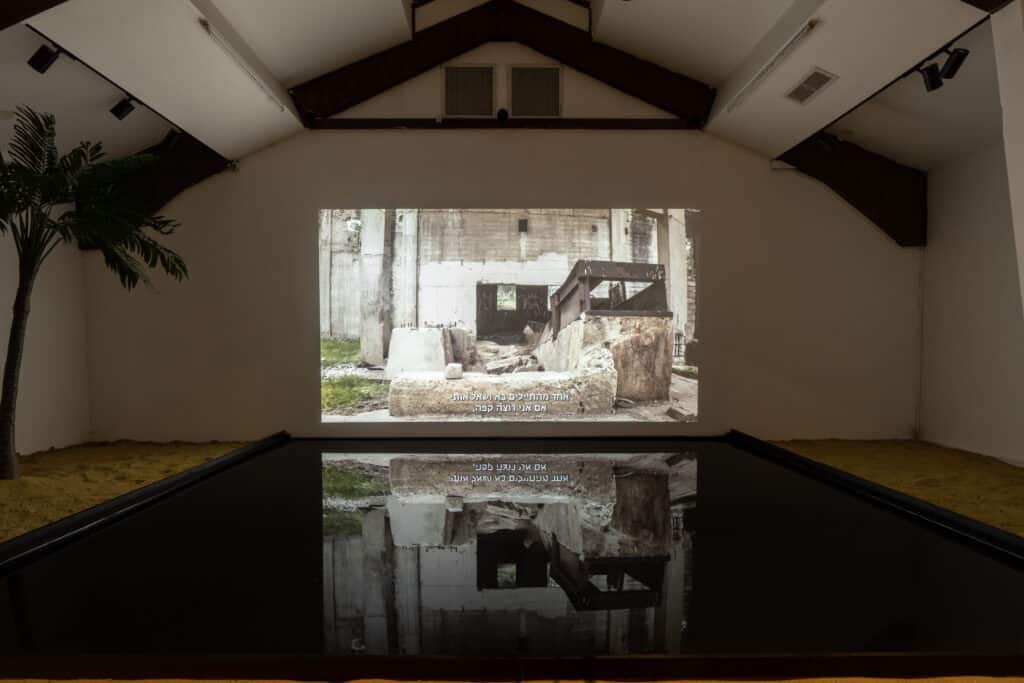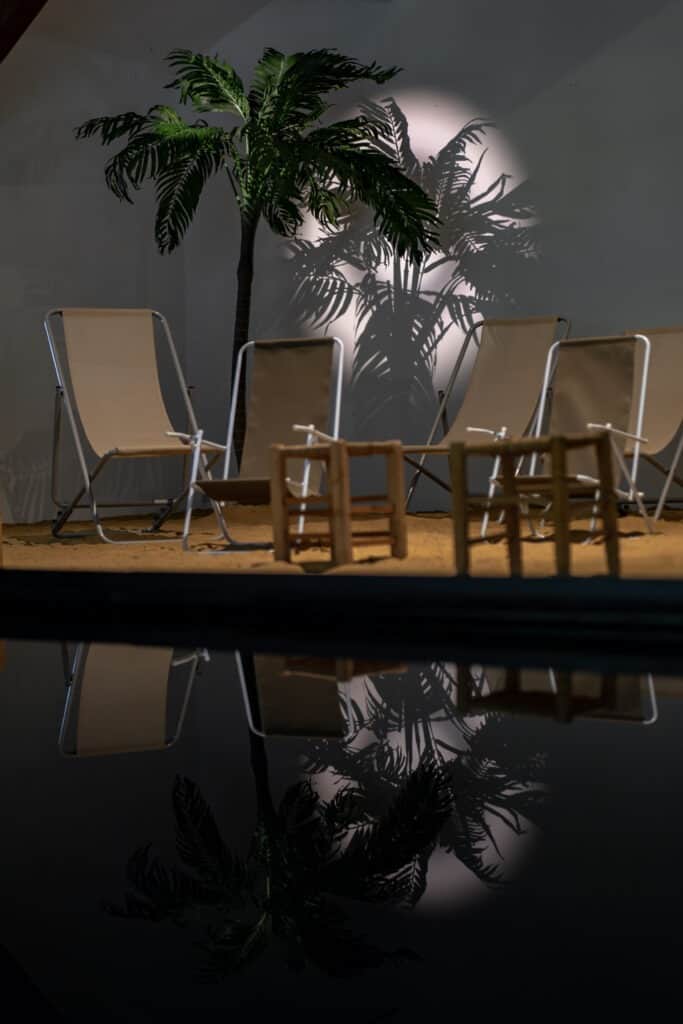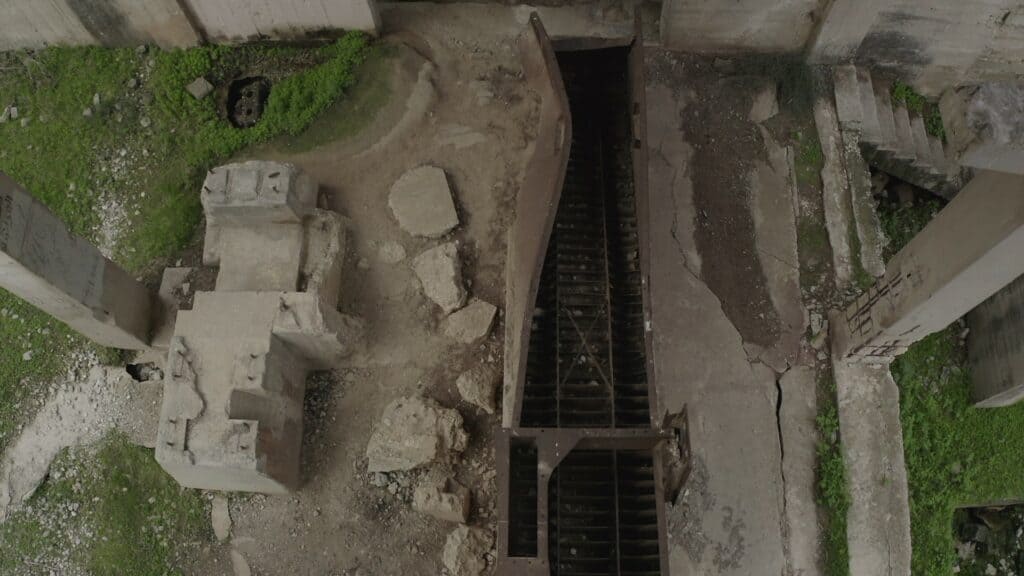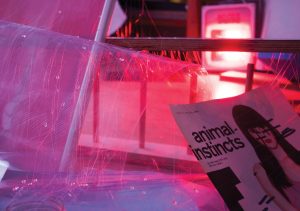Life between pretty and terrible, Ideal and defective
Orit Ishay’s practice constantly moves between these contrasts of pretty and terrible, sterile-clean and affecting, idyllic and defective, calm and disturbing. Even if there is drama in her work, it’s always under the surface, unseen, deluding the viewer.
The center of “Oasis Shalvata” her new exhibition at the Gallery in Beeri, features her breathtaking video work, ‘Smoke in the Desert.’ It is breathtaking because of the human soundtrack that tells the true story of a Yom Kippur warfighter who deals with a chilling moral dilemma, refusing a direct order while taking part in the most humane act there is. It is also breathtaking, photographically speaking. It is mainly shot from the bird/drone’s eye view, slow and lingering; it is almost a still photo, beautiful and pastoral, while disturbing, abandoned, empty, wild, and militaristic. The humane story is told against the backdrop of the region’s landscapes laden with the local history of a bloody conflict: sparse groves of parched Eucalyptus trees, Negev terrains seeming detached from reality because they are not agricultural fields, nor a desert or a settlement. It is dispersed with old British-era sulfur mines that, from above, appear like a hallucinatory lunar landscape: relics of an abandoned sulfur factory, relics of British military buildings and a Zionist settlement, a water tower, a grooved concrete road, and dozens of ammunition sites, walls, and dugouts that look, from an overview, like relics of an ancient civilization or a battlefield, lined up in rows within the wheat fields. In the background, the speaker’s voice sounds disconcerting, noises portending a sense of dread and anxiety, disruption and disturbance, emanating distant booms and pounding drums-heart.
The video work projected on the gallery wall is doubled over and reflected in pool waters. The gallery floor disappeared under the covering sand, and an oasis has grown in the room: palm trees, deck chairs, and woven-rope stools. It’s so beautiful, peaceful, and tempting to sink into the deck chairs or roll about in the soft sand. But under this quiet, calm surface, a vague sense creeps in of disruption and disarrange: the palm trees are a plastic backdrop, the artificial pool looks like it’s coming out of the wall, fastened to it, and even the deck chairs are sort of a mutation, their colorful fabric replaced by military uniform khaki. The moon’s halo on one of the palm trees is produced by a flashlight.
A small screen features another video showing a dumpster site at Kibbutz Beeri; a carpet is spread out at its center, and a woman is sweeping it with a broom. Who puts a household carpet in a dumpster and takes the trouble cleaning it? This also is not normative and surreal. Sarka , a Kibbutz Beeri veteran, tries to create small islands of serenity, cleanliness, and beauty within the public space. She tended the garbage bins areas for years, cleaned and tidied them, and even laid out carpets. The endless, repetitive loop of the Sisyphean sweeping act is a form of disruption and abnormality. Another screen shows butterflies attempting to fly (“Die to Fly”): a 30-second loop of Wing-claps and a disturbing flutter.
The choice of the name – “Shalvata” (an Israeli psychiatric hospital whose name means ‘Tranquility’) – throws us from peace and calmness to madness and back again. We, as local residents, do not feel how offbeat it is to live our day-to-day close to the Gaza border in constant, years-long conflict because it is the reality to which we were born. However, a momentary visitor from outside of Beeri does feel it. The soldier’s testimony envelops the space, raising a question – how far can a man follow his gut feeling? What is the possible cost of refusing an order? How can a friendship be formed amid the battlefield between people from two sides of the border? It is a story of humaneness and humanity, faith in the person standing before you. It’s a story that brings hope, but is there still hope for a life of sanity, or has hatred already extinguished any such glimmer? Orit Ishay flirts with this story, raising feelings and questions.











